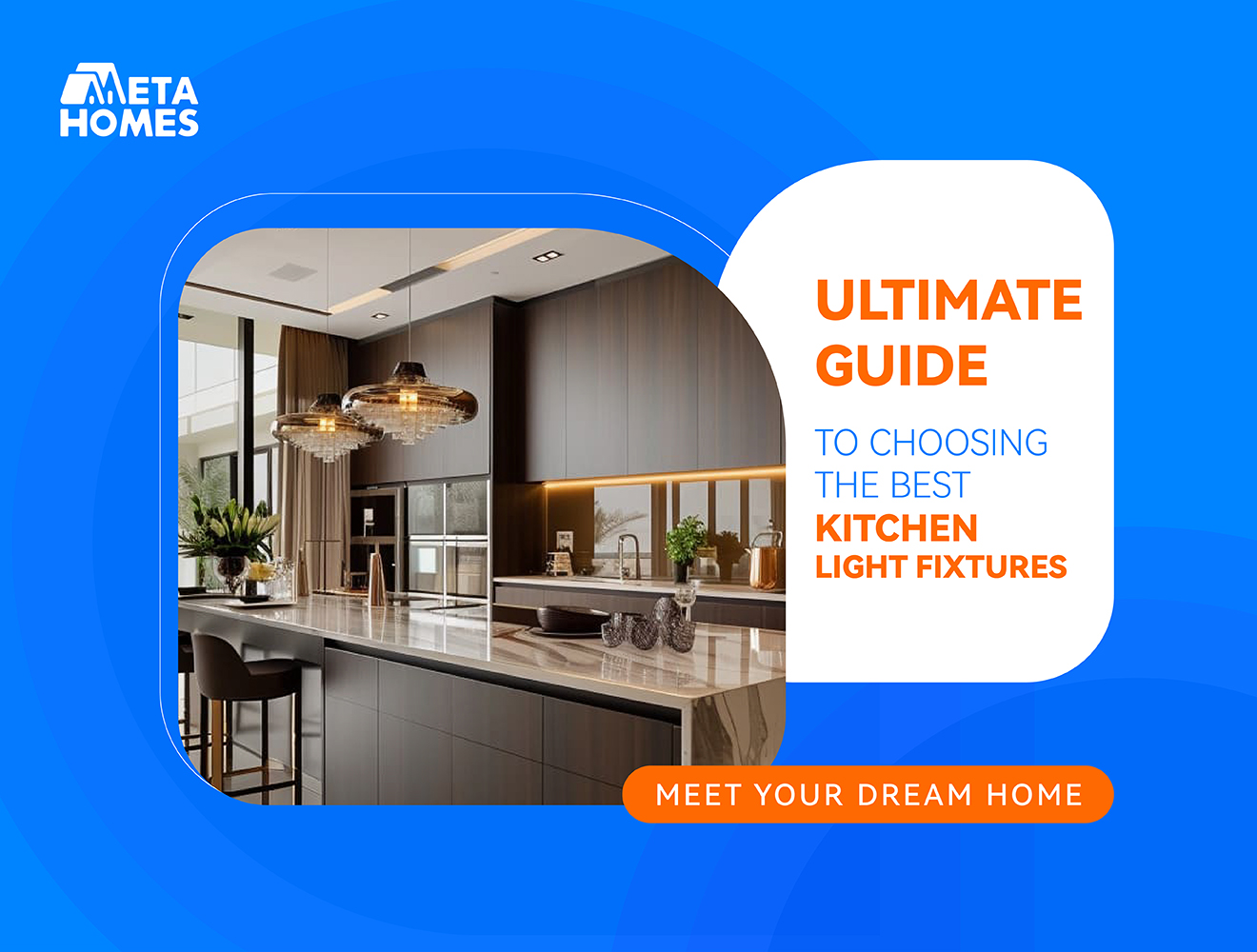
Lighting plays a crucial role in shaping the ambiance and functionality of any space, and the kitchen is no exception.
The kitchen, often regarded as the heart of the home, is where meals are made, families come together, and memories are created.
As such, the right lighting is essential not only for practical purposes but also for creating a warm and inviting atmosphere.
Kitchen lighting needs to be versatile, providing sufficient illumination for tasks while also enhancing the overall design of the space.
Whether you are renovating your kitchen or simply updating the light fixtures, choosing the right lighting requires careful consideration of style, functionality, and the specific needs of your kitchen.
Understanding Your Kitchen’s Lighting Needs
Before diving into the different types of light fixtures available, it’s important to understand your kitchen’s lighting needs.
A well-lit kitchen typically requires three types of lighting: ambient, task, and accent lighting.
Ambient lighting offers general illumination, ensuring that the entire area is evenly lit. This type of lighting is often achieved with ceiling fixtures or recessed lights.
Task lighting, on the other hand, is focused on specific areas where detailed work is performed, such as countertops, the stove, or the sink.
Task lighting commonly includes options like under-cabinet lights and pendant lights.
Lastly, accent lighting adds depth and highlights specific features in the kitchen, like a decorative backsplash or open shelving.
By combining these three types of lighting, you can create a balanced and functional kitchen environment.
Considering the Size and Layout of Your Kitchen
The size and layout of your kitchen play a significant role in determining the type and number of light fixtures needed.
In a small kitchen, a single ceiling fixture or a series of recessed lights may provide sufficient ambient lighting.
However, larger kitchens typically require multiple light sources to ensure even illumination throughout the space.
For instance, a spacious kitchen with an island might benefit from a combination of ceiling fixtures, pendant lights, and under-cabinet lights.
It’s also important to consider the placement of these fixtures. Proper placement ensures that light is evenly distributed, avoiding dark corners or overly bright spots.
Matching the Light Fixture Style with Your Kitchen Décor
Your kitchen light fixtures should complement the overall style of your kitchen. Whether your kitchen design is modern, traditional, rustic, or industrial, there are light fixtures available to match every aesthetic.
Sleek, minimalist fixtures with clean lines and metallic finishes are perfect for modern kitchens.
Recessed lighting, LED strips, and contemporary pendant lights work well in these spaces.
In contrast, traditional kitchens often feature classic design elements like wood cabinetry and natural stone countertops, making chandeliers, lantern-style pendant lights, and vintage-inspired fixtures a good match.
If your kitchen has a rustic feel, opt for light fixtures made of natural materials like wood or wrought iron. Exposed bulb fixtures, farmhouse-style pendants, and vintage lanterns can enhance the rustic ambiance.
Finally, for industrial-style kitchens, consider fixtures with metal finishes and utilitarian designs, such as pendant lights with metal shades or track lighting.
Functionality Should Be a Priority
While the style of your light fixtures is important, functionality should be a top priority. After all, the kitchen is a working space, and the lighting should support the tasks performed there.
Adjustable fixtures, such as track lighting or swing-arm wall sconces, allow you to direct light where it’s needed most.
Dimmable lights offer flexibility, allowing you to adjust the brightness according to the time of day or the task at hand.
This feature is particularly useful in kitchens that serve multiple purposes, from food preparation to dining and entertainment.
Energy efficiency is another factor to consider. LED lighting, for example, is not only energy-efficient but also long-lasting, making it an excellent choice for kitchens where lights are frequently used.
Choosing the Right Bulbs
The type of bulb you choose for your kitchen light fixtures can significantly impact the quality of light and energy consumption.
Incandescent bulbs provide warm, soft light but are less energy-efficient and have a shorter lifespan compared to other options.
LED bulbs, on the other hand, are energy-efficient, long-lasting, and available in various color temperatures, making them an excellent choice for kitchens.
Fluorescent bulbs are another energy-efficient option, providing bright light, though they may not be as warm as incandescent or LED bulbs.
Halogen bulbs offer bright, white light and are more energy-efficient than incandescent bulbs, but they can get very hot, so they are best used in well-ventilated areas.
When choosing bulbs, take into account the color temperature, which is measured in Kelvins (K). For a cozy, warm kitchen atmosphere, choose bulbs with a color temperature of 2700K to 3000K.
For a brighter, more energetic environment, opt for bulbs in the 3500K to 5000K range.
Don’t Overlook Installation
Once you’ve chosen your light fixtures, the next step is installation. While some homeowners may choose to install light fixtures themselves, it’s often best to hire a professional electrician to ensure that the fixtures are installed safely and correctly.
Proper installation is crucial for avoiding issues such as uneven lighting, faulty wiring, or inadequate fixture support.
A professional can also offer advice on the best placement for your light fixtures to ensure optimal lighting throughout the kitchen.
Budget Wisely
Lighting can be a significant investment, so it’s important to budget wisely. While it may be tempting to choose the least expensive option, it’s worth considering the long-term value of higher-quality fixtures.
Investing in durable, energy-efficient light fixtures can save you money on energy bills and replacement costs in the long run.
Decide how much you’re willing to spend on each fixture, and keep in mind that sometimes spending a bit more can result in better quality and longer-lasting lighting.
Notes:
The key to selecting the best lighting fixture is ensuring it meets your specific needs. Also, what is the need for putting lights that will not serve any purpose?
To keep mounting bills? Certainly not. Make sure that the lighting fixture serves a purpose and not just mounting bills.
For optimal function and usage, it is advisable to make task lights easily adjustable so that you can move them from one end to another, depending on your current needs. After all, that’s what task lights are used for – to perform particular tasks.



Leave a Reply